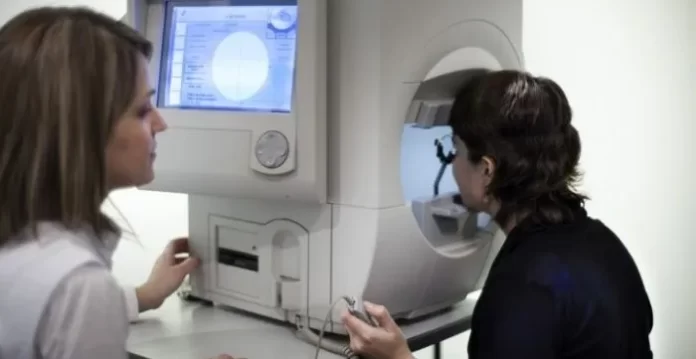Keeping your health in check is a crucial undertaking, especially when you’re dealing with medical conditions. Glaucoma is one such serious eye disorder that often results from increased pressure within the eye. Studies have shown that glaucoma is a leading reason for vision loss among people over 60 years old. Regular visual field tests are typically advised for managing and diagnosing this condition.
If you have glaucoma, it’s generally advised to have your vision evaluated at least annually, though the exact frequency may depend on how advanced the condition is. These assessments help physicians gauge your full range of vision, essentially measuring what you can see without turning your eyes or head.
Glaucoma mainly affects your side vision and is frequently not discovered until it becomes advanced. Non-intrusive visual field tests are key instruments for noticing minor alterations in your vision.
Different types of visual field tests can be used for glaucoma diagnosis:
Electroretinography: This sophisticated test diagnoses vision problems arising from particular conditions affecting the retina. It measures the retina’s electrical responses using a speculum to keep the eye open, applying anesthetic eye drops, and then placing a tiny electrode on the cornea. The eye’s electrical reactions are captured as it’s exposed to varying light patterns or colors.
Automated Perimetry Test: This test, conducted with computer assistance, evaluates your ability to detect objects across your visual field. It’s especially helpful for spotting possible eye issues or monitoring existing ones. You’ll concentrate on a fixed point as faint lights are shown at different points around your field of vision. You’ll press a button whenever you spot a light, helping to create a comprehensive visual field map.
Dynamic Visual Field Testing: This technique, an alternative to static perimetry, utilizes moving lights rather than stationary ones. The test is tailored to the seriousness of your eye condition and measures your ability to recognize moving objects in your visual field.
Confrontation Visual Field Test: This straightforward test is often used for those with less severe forms of glaucoma. While focusing on an object or the examiner’s face, you’ll cover one eye. The doctor then holds up varying numbers of fingers at the edge of your field of vision to assess your peripheral sight.
To sum up, multiple test options exist for evaluating vision in individuals with glaucoma. Your healthcare provider will select the most appropriate test based on your condition’s severity. Basic tests like the confrontation visual field test are usually chosen for less serious cases, while more advanced methods like automated perimetry are used for more critical conditions.




























